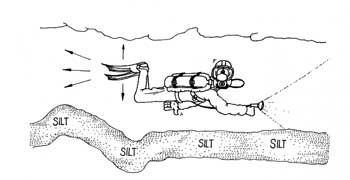The
word "Cenote" is pronounced, say-no-tay and is derived from
 the Mayan word, "Dzonot"
which means sacred well. A combination of various geological events and
climate changes created an incredible and unique ecosystem in Mexico's Yucatan
Peninsula. These caves and underground rivers were created naturally over 6,500
years ago. Over the past 20 years, experienced scuba divers have explored these
caves discovering more than 300 miles of interconnected passageways and caves
that make up this amazing one of a kind ecosystem. the Mayan word, "Dzonot"
which means sacred well. A combination of various geological events and
climate changes created an incredible and unique ecosystem in Mexico's Yucatan
Peninsula. These caves and underground rivers were created naturally over 6,500
years ago. Over the past 20 years, experienced scuba divers have explored these
caves discovering more than 300 miles of interconnected passageways and caves
that make up this amazing one of a kind ecosystem.
These cenotes, only found in this part of the world, offer certified divers
the opportunity to explore something different! Discover the tranquil beauty of
these pristine windows to the underwater world and experience the dive of your
life floating through caverns full of crystal clear water, stalagmites and
stalactites.
Diving in a cenote cavern is an unforgettable experience, unique to this area
of Mexico. Cenotes are cavern entrances to the underground river system of the
Yucatan Peninsula. The maximum depth reached is 50 feet (16 meters), with
excellent visibility, no current, and fresh water.
We conducts two tank cenote dives every day of the week. We visit the diver's
choice from eight marvelous caverns that we have selected for our dives.
Transportation to the dive sites is in an air conditioned vehicle, and our
two tank cenotes dives explore two different caverns. Dive groups consist of a
maximum four divers per guide. All of Sealife Divers' cenote guides are
certified cave divers. The maximum depth reached on the dive is 50 feet (16
meters), with excellent visibility, no currents, truly an unforgettable
experience.
Meet at the dive shop at 8:30am. You must show proof of Open Water
Certification to dive in the cenotes. You can read about cenote cavern diving
techniques, see cenote cavern dive prices, and learn more about cenotes on our Cenote / Cavern / Cave
page and see more
photos of Cenotes.
|
Propulsion Techniques:
The following description is one of the recommended techniques
for cavern and cave diving the cenotes of the Riviera Maya.
Modified Flutter Kick

Picture provided by S.Gerrard
The Cenotes of the Riviera Maya To Purchase this book click on the links
"its a Good one to have "
The diver is looking straight ahead, swimming
horizontally and moving the ankles only in a casual,
alternating style, bending the knees and holding firmly in place. The technique
is the most common used in cavern and cave diving.
|
Limits:
- No decompression.
- Penetration: max. 200 feet (60m) from opening.
- Depth max. 70 feet (21m).
- Minimum visibility of 40 feet (12.5 m).
- Large with no restrictions.
- Area with ceiling and some visible light.
Environmental Concerns:
Please help us to preserve these fragile cenotes. Dive gently!
- Take nothing.
- Reduce drag from equipment.
- No grabbing or pulling speleothems.
- Try not to touch sediments.
Communications:
Light and Hand Signals:
Our Certified Full Cave Guide will go over all signals with you
before the dive.
|
Techniques:
Buoyancy and Propulsion:
- Minimize weight and do a buoyancy check before the dive.
- Buoyancy wanted.
- Gentle kicks from the knee and ankle, not the hip.
Body Position:
- Head down slightly, body horizontal
- Mid-water positioning, stay off bottom and top.
|
Fun Facts:
- Longest Cave Dive - 8 hours, 5 min.
- Total number of known cave systems: 60
- Water Temperature: 25 C / 77 F
- Cenotes we visit in the top 10 longest cave systems within the Riviera
Maya:
1. Nohoch Nah Chich (225,000 ft/68,182 m)
2. Dos Ojos (200,000 ft/60,606m)
7. Ponde Rosa (49,275 ft/14,132m)
10. Chac Mool (27,000 ft/8,182 m)
- Deepest Caves 351 feet / 106 m
- The 3 largest underground rivers in the world are all located in Riviera
Maya.
|